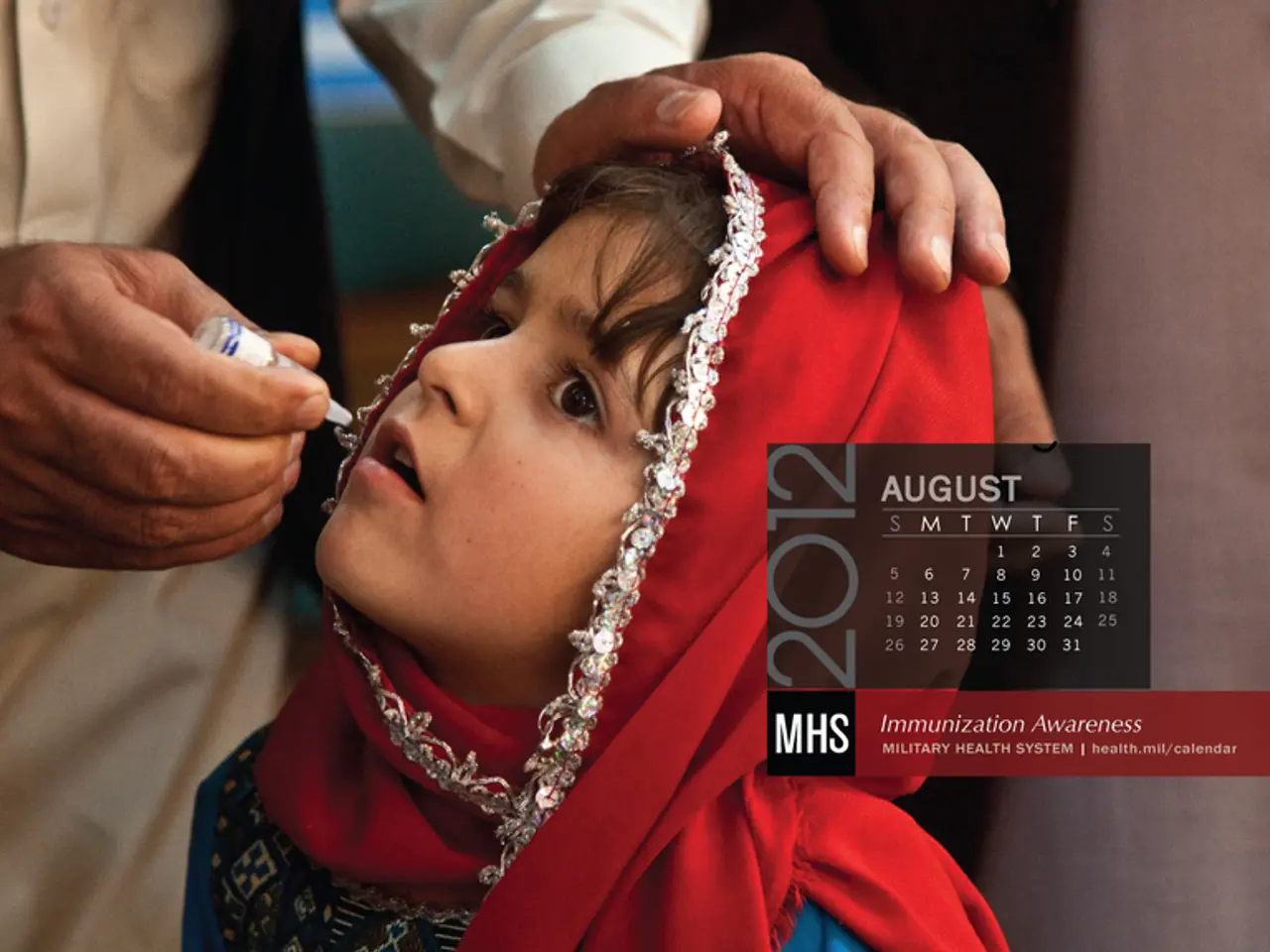Basal Cell Carcinoma: Categories, Identification, and Additional Info
Basal Cell Carcinoma: A Common but Potentially Serious Form of Skin Cancer
Basal cell carcinoma (BCC) is the most common type of skin cancer, accounting for a significant number of cases each year. In the United States, an estimated 5 million cases of BCC and squamous cell carcinoma are diagnosed annually [1].
BCC arises from the basal cells, round cells in the epithelium, the outer layer of the skin. Several factors can contribute to the development of BCC, including UV light exposure, genetic mutations, and immune suppression [2].
Excessive sun exposure, particularly sunburns, can increase the risk of BCC. Factors such as having a fair complexion, red hair, and a history of serious sunburns can further elevate this risk [3]. Other risk factors include exposure to toxic chemicals, such as arsenic, and certain genetic conditions, like Gorlin syndrome, Rombo syndrome, or Bazex-Dupre-Christol syndrome [4].
BCC typically presents as flesh-colored or unusual lumps or bumps, waxy or scaly spots, or skin-colored growths. The nodular and micronodular forms are the most common types, but there are at least 26 different types of BCC [5].
While BCC generally has a very low mortality risk and is rarely life-threatening when detected and treated early, long-term complications can arise if the carcinoma is untreated or recurs. Local tissue damage and recurrence can lead to disfigurement, functional impairment, and sometimes recurrent disease that requires extensive treatments. Rare cases of metastasis, where the BCC spreads to lymph nodes or distant organs, have poor survival rates [6].
Treatment-related morbidity is another concern. Common treatments like surgery, such as Mohs micrographic surgery, can lead to scarring or require reconstructions to preserve function and aesthetics. For advanced or recurrent cases, systemic therapies like vismodegib may be used but can have side effects [7].
Regular follow-up and timely intervention are critical to minimize these complications. Regular skin checks and prompt treatment for any unusual growths on the skin can help identify BCC early. People with a weakened immune system, such as those with HIV or undergoing immunosuppressive therapy, are at increased risk for BCC and should be particularly vigilant [8].
It's important to note that BCC is not a risk factor for or an early warning sign of other diseases. However, pre-cancerous growths like actinic keratosis can increase the risk of BCC [9].
In conclusion, while BCC usually has an excellent prognosis with early and appropriate treatment, failure to manage the tumor can lead to significant local destruction and, rarely, metastasis with increased mortality risk. Regular follow-up and timely intervention are crucial to minimize these complications [10].
References
- American Cancer Society. (2021). Skin cancer statistics. Retrieved from https://www.cancer.org/cancer/skin-cancer/data-and-statistics/skin-cancer-statistics.html
- National Cancer Institute. (2021). Basal cell carcinoma treatment. Retrieved from https://www.cancer.gov/types/skin/hp/basal-cell-treatment-pdq
- Skin Cancer Foundation. (2021). Sun protection facts. Retrieved from https://www.skincancer.org/prevention/sun-protection/sun-protection-facts
- National Cancer Institute. (2021). Genetics of basal cell carcinoma. Retrieved from https://www.cancer.gov/types/skin/hp/basal-cell-genetics-pdq
- American Academy of Dermatology. (2021). Basal cell carcinoma. Retrieved from https://www.aad.org/public/diseases/skin-cancer/basal-cell-carcinoma
- National Cancer Institute. (2021). Prognosis for basal cell carcinoma. Retrieved from https://www.cancer.gov/types/skin/hp/basal-cell-prognosis-pdq
- American Cancer Society. (2021). Basal cell carcinoma treatment. Retrieved from https://www.cancer.org/cancer/skin-cancer/treatment/basal-cell-carcinoma-treatments.html
- American Cancer Society. (2021). Basal cell carcinoma risk factors. Retrieved from https://www.cancer.org/cancer/skin-cancer/causes-risks-prevention/basal-cell-carcinoma-risk-factors.html
- American Academy of Dermatology. (2021). Actinic keratosis. Retrieved from https://www.aad.org/public/diseases/skin-cancer/actinic-keratosis
- National Cancer Institute. (2021). Follow-up after treatment for basal cell carcinoma. Retrieved from https://www.cancer.gov/types/skin/hp/basal-cell-follow-up-pdq
Medical-conditions like melanoma and basal cell carcinoma (BCC) are significant concerns in the health-and-wellness field, with BCC being the most common type of skin cancer. Science has identified various risk factors for BCC, including genetic mutations, UV light exposure, and immune suppression. While BCC typically presents as flesh-colored or unusual lumps or bumps, understanding the different types, such as the nodular and micronodular forms, is crucial for early detection and treatment. Timely intervention and regular follow-up are essential to minimize potential complications and prevent the rare cases of metastasis that can lead to increased mortality risk.




